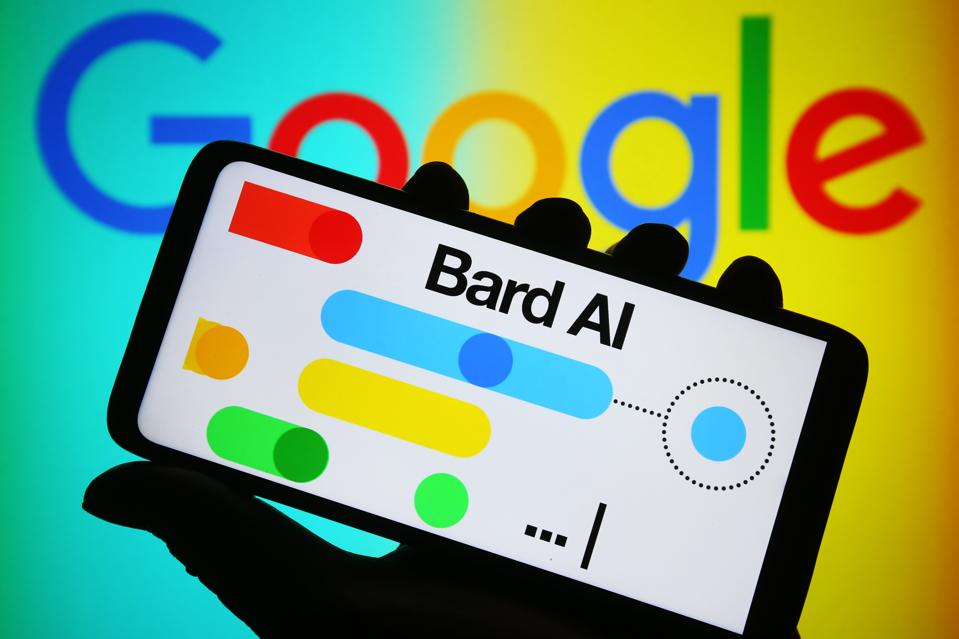Google has integrated its artificial intelligence chatbot Bard into applications like YouTube, Gmail and Drive, the company announced Tuesday, as AI competition heats up between Google and OpenAI, the Microsoft-backed creator of ChatGPT.

The AI race between Google and Microsoft—which backs the creator of ChatGPT—is heating up.
SOPA Images/LightRocket via Getty Images
Key Takeaways
- Bard has been incorporated into Google’s applications like Gmail, Docs, through “Bard Extensions,” allowing users to collaborate with the chatbot while using services like Gmail and Google Docs, Yury Pinsky, Bard’s director of product development, announced Tuesday.
- Bard can access multiple applications at once through a single conversation, Pinsky said: For example, if a user is planning a trip, Bard can check Gmail to see what dates work best then check flight and hotel information, then Maps for directions to the airport and YouTube for suggested videos of things to do during the trip.
- Multiple users can share the same Bard chat through a single link, allowing each user to ask additional questions.
- Bard will also now incorporate a “Google it” button that will allow users to double-check answers given by the chatbot, which will highlight whether responses are backed by other online sources.
Surprising Fact
Bard recorded just under 200 million desktop and mobile web visits in August, according to the data analysis firm Similarweb. OpenAI’s ChatGPT recorded 200 million visits that same month.
Key Background
Bard Extensions was released nearly six months after OpenAI announced ChatGPT plug-ins, which allow the chatbot to access updated information and third-party services from other applications, like Expedia, OpenTable and Instacart, among others. Google unveiled its Bard chatbot in March, following a frenzy by other tech companies to launch similar artificial intelligence chatbots after OpenAI—backed by Google’s rival Microsoft—released ChatGPT last year. Google incorporated Bard into its search engine in May in an effort to expand on the chatbot’s use through Google products, after Microsoft integrated technology similar to ChatGPT into its search engine Bing in February.
Jack Krawczyk, Google’s product lead for Bard, told the New York Times Bard was still in its “early days,” adding the still-experimental chatbot had “profound capabilities.” Google’s decision to add a “Google it” feature to Bard’s responses follows concerns that AI chatbots will “hallucinate” facts, after OpenAI warned its own chatbot could “occasionally generate incorrect information” or “produce harmful instructions or biased content.”
Crucial Quote
Krawczyk, told the Times the company was “committed to making Bard more trustworthy by not only showing the confidence of our response, but admitting when we make a mistake.”
This article was first published on forbes.com and all figures are in USD.


